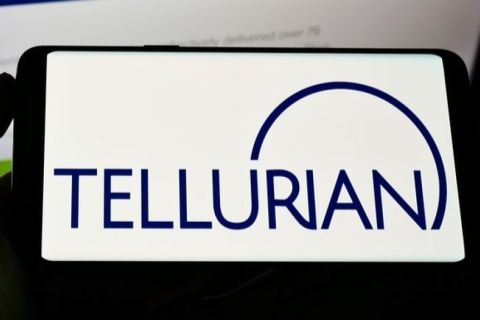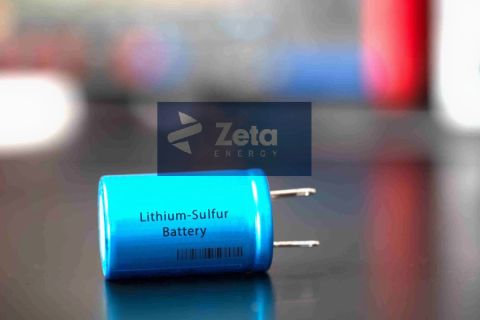If at first you succeed, keep using the same business strategy-over and over. This, in substance, is the philosophy that has driven Jon Brumley in his 35 years in the upstream patch, first at Southland Royalty Co., then at Cross Timbers Oil Co. , Mesa Inc. and Pioneer Natural Resources Corp. Now that philosophy is taking another curtain call through Brumley's new upstream entry, one appropriately named Encore Acquisition Co. To understand the strategic thinking behind Fort Worth-based Encore, which debuted on the New York Stock Exchange this past March under the symbol EAC, is to understand Brumley's thinking-and track record-since 1967. That year, the Pampa, Texas-born and Austin-bred oil-patch veteran, who holds an MBA from the University of Pennsylvania's Wharton School of Business, started as an administrative assistant at Southland Royalty, a Fort Worth operator with a market cap then of $100 million. Initially an exploration company, by 1976 it switched to being an acquisition-driven producer, acquiring that year from Dallas-based Aztec Oil & Gas a group of San Juan Basin gas properties that had about a trillion cubic feet of gas reserves. "Importantly, these were long-life gas properties with significant potential for exploitation drilling," says Brumley. Sticking with this acquire-and-exploit strategy, Southland Royalty by 1980 exploded to $4 billion in market cap. Five years later, Brumley, who by then had become Southland's president and chief executive officer, effected the sale of the company to Burlington Northern Railroad and turned his attention to replicating Southland's growth strategy elsewhere. He didn't waste time. In 1986, Brumley co-founded Fort Worth's Cross Timbers Oil Co. , which is now known as XTO Energy , to focus on the acquisition and development of long-lived properties. It didn't take long for both visions to be realized. By 1992, the Cross Timbers Royalty Trust was carved out of the company's nonoperated producing properties. Half the trust units were sold publicly; the other half were distributed to the original investors. The following year, Cross Timbers Oil went public with an initial $200-million market cap. By the time Brumley resigned as its chairman in the summer of 1996, the company had acquired better than $500 million worth of properties. That same summer, Brumley was asked by Richard Rainwater and T. Boone Pickens to chair Mesa Inc. and seek out a special kind of acquisition-a merger partner. A year later, Mesa was merged with Parker & Parsley to form Pioneer Natural Resources. After getting that new entity off the ground, Brumley exited Pioneer in 1998 to pursue a long-delayed wish: the start-up of his own company-Encore. He was joined by his son Jon S. Brumley, who had previously been manager of energy services at North Central Oil, which was recently acquired by Pogo Producing Co. , and manager of commodity risk and corporate development at Pioneer. At Encore, Jon S. stepped in as executive vice president of business development. The senior Brumley was also joined by Kyle M. Schultz, who was named vice president of exploitation; Gene R. Carlson, executive vice president of operations; and later, Sam Smith, executive vice president and chief financial officer. "For some time, Jonny and I had wanted to work together in our own company, following the business model that was employed so successfully at Southland and Cross Timbers," says the senior Brumley, Encore's chairman, president and chief executive officer. Unlike a lot of start-ups, the company had no problem raising capital from the private equity markets. In fact, just the opposite was true. "When I met Jon Brumley in the spring of 1998, the question wasn't whether we were going to invest in him, but whether he was going to take our money," says Howard H. Newman, vice chairman, Warburg, Pincus in New York. "From our viewpoint, he was a proven executive with a proven business model who was approaching a part of the industry then out of favor-oil. So we had all the makings of a good investment. And out of a total private equity commitment of $300 million that Jon secured that year, we committed $140 million. Unfortunately, he didn't take it all down. We only wound up putting about $60 million into Encore." Initial private equity commitments also came from J.P. Morgan Partners , to the tune of about $100 million, as well as from Natural Gas Partners and First Union Capital . In June 1999, Encore used $86 million of that aggregate $300 million in equity commitments to make its first major acquisition-the $172-million purchase of Shell Oil 's Cedar Creek Anticline oil properties. These 9,000-foot, Red River formation holdings are located along a 60-mile, north-south stretch on the western edge of the Williston Basin in Montana and North Dakota. The remainder of the Shell acquisition cost-as well as the cost of subsequent acquisitions-was funded from bank debt, with Bank of America as the lead lender. What is it about Encore's business plan that drew so many backers? "We try to acquire properties-oil or gas-that enable us to replace production with half our cash flow," says Jon Brumley. "We're then able to use the other 50% of cash flow to grow our asset base. How we go about growing that base relates to where we are in the industry cycle. When acquisition values are high, we focus mainly on exploitation drilling opportunities, while making only smaller, niche acquisitions. In fact, we can currently grow production through drilling alone at about a 10% rate annually for the next three or four years without making any acquisitions." Conversely, when acquisition values are low, Encore focuses on significant acquisitions to take advantage of that point in the pricing cycle to grow. For instance, the purchase of Shell's Cedar Creek Anticline properties, which accounts for 86% of EAC's reserves, was made at a time when oil was $12 per barrel-plus the properties had significant long-term exploitation opportunities that are now being drilled up in what has turned out to be a $25-plus-per-barrel crude oil market. Observes Brumley, "Often, when a particular commodity is out of favor, it's the contrarian view that will make money down the road." Since the Shell purchase, the company has also acquired for a collective $127 million, attractively priced Permian Basin gas properties in Crockett County, Texas; oil properties in the Lodgepole area in North Dakota's Williston Basin; gas assets in both New Mexico's Indian Basin and in the Verden area in Oklahoma's Anadarko Basin; and oil properties in the Bell Creek area of Montana. This buying spree has boosted EAC's current proved reserves to 103 million equivalent barrels of oil. But that's not a static number. During the next four years, Encore's goal is to buy another $200 million worth of acquisitions. And with current debt of $65 million following its $100-million March IPO, and EBITDA (earnings before interest, taxes, depreciation and amortization) this year of $90 million, the company is in a good position to make strides in that direction, as opportunistically priced properties come to market. Stresses Brumley, "We don't focus on oil or gas. We're totally return-driven. So we'll acquire whatever we think will give us the best rate of return." So far this year, Encore's drilling in the Cedar Creek Anticline and in Crockett County has generated a 30% or better rate of return (ROR)-using only conservative 2001 price decks of $23.50 for oil and $3.75 for gas. Brumley, however, encourages investors to focus more on an overall rate of return in the 17% to 18% range. The reason? Should it at any time make a $50- or $100-million acquisition, Encore's ROR would be relatively low until it could begin exploiting the acquired property. To help stabilize returns, the company has in place a two-tiered hedging strategy, explains Jon S. Brumley. "On a large portion of the base volumes of production that we already own, we buy floors or puts, so that if commodity prices drop, we're protected on those volumes down to a specified price. On the other hand, if oil or gas prices rise, we're able to participate in that upside movement 100%." In the case of production volumes associated with a new acquisition, "we might, for two to three years, lock in with swaps (forward sales) or costless collars the selling price on 50% of those volumes that are in the proved-developed-reserve category," he says. "By doing this, we're giving up some upside if commodity prices rise, but we're ensuring that the acquired volumes meet our price decks and hence, our targeted return for that acquisition." Currently, exploitation drilling is moving ahead briskly on Encore's crown jewel properties. So far, it has drilled 83 wells-75 on the Cedar Creek Anticline, eight in Crockett County-says Jon S. Brumley. "For the remainder of 2001, we'll be drilling another 80 wells at Cedar Creek and an additional 10 wells at Crockett." Why the stepped-up pace? "We're seeing more locations to drill than we did at the outset. Take the Cedar Creek Anticline. When we bought that property, it had about 89 million barrels of proved oil reserves; however, we now have about 38 million barrels or more that are still unbooked. The same holds true for Crockett. It has about 40 billion cubic feet equivalent of proved gas reserves, but there's another 32 Bcfe of unbooked reserves." Says Alesandra Zortea, vice president and U.S. exploration and production equity analyst for Goldman Sachs in New York, "Owing to its long-lived reserves and its large identified inventory of low- and medium-risk development projects, Encore is well positioned to grow production at least 10% to 12% annually during the next two to three years-with any future acquisitions additive to that growth rate." But there's more to the Encore exploitation story. "We see considerable upside from a potential carbon dioxide flood at the Cedar Creek Anticline, Lodgepole and Bell Creek properties," says John J. Myers, managing director and E&P analyst for Dain Rauscher Wessels in Austin, Texas. Adds Philip L. Dodge, managing director and energy analyst for Josephthal & Co. in Boca Raton, Florida, "Encore is evaluating tertiary recovery investments on the Cedar Creek Anticline, and if their CO2 program proceeds there-as we believe it will-additional oil recovery could be as much as 200 million barrels during a 20- to 30-year period." While the senior Brumley is understandably excited about the prospect of taking his company from a reserve size of 103 million equivalent barrels to more than 300 million, he's nonetheless moving ahead gingerly with his study of the project, which is not expected to be completed until year-end 2001 or first-quarter 2002. "This is like an exploration program, except you know where the oil is. However, there are many components to this project: the transportation of CO2, the field infrastructure that has to be built, and the infill wells that have to be drilled," he says. "In addition, there's the option of using air injection and we're weighing the economics of this approach . So there's a lot to consider, and at the end of the day, we've got to be certain that the rate of return on a project like this is better than making an acquisition. If it is, then we'll move forward." Despite all this potential upside and the company's above-average growth profile, Encore still trades at one of the lowest valuations in its peer group, says Zortea. Focusing on Encore's enterprise value (equity plus debt) versus its proven reserves, she notes that the company's reserves are currently being valued at 72 cents per thousand cubic feet equivalent, or $4.32 per BOE, compared with a peer group average of $1.32 or $7.92. "This is attributable to, but not justified by, the oil-weighting of its assets," she says. Adds Phillip Z. Pace, managing director and E&P analyst for Credit Suisse First Boston in Houston, "The company's long reserve life and well-defined backlog of probable and possible drilling locations should support a relatively high cash flow multiple. Currently, the shares are attractively valued at only 5.5 times estimated 2002 cash flow, six times estimated 2002 EBITDA, and at only 87% of our estimated $14.44-per-share net asset value." Does Brumley feel there's anything about Encore that Wall Street could better appreciate? "Analysts probably shouldn't focus too much on the quarterly results of operators like ourselves because production isn't going to go up in steady increments," he says. "For instance, there'll be some quarters where we emphasize water-injection wells and output won't go up at all; then in other quarters, it'll be up 3% or 4%. What's important to focus on is annual production growth. In our case, that's going to be 10% or better-without acquisitions." Inevitably the question arises: will Jon Brumley, after this round of company-building, seek another Encore for himself? "I'm not sure I would want to do this all over again in another four or five years," he says. "For me, this may well be my last call, rather than just another encore."
Recommended Reading
Analyst Questions Kimmeridge’s Character, Ben Dell Responds
2024-05-02 - The analyst said that “they don’t seem to be particularly good actors.” Ben Dell, Kimmeridge Energy Partners managing partner, told Hart Energy that “our reputation is unparalleled.”
Tellurian Reports Driftwood LNG Progress Amid Low NatGas Production
2024-05-02 - Tellurian’s Driftwood LNG received an extension through 2029 with authorization from the Federal Energy Regulatory Commission and the U.S. Army Corps of Engineers.
Zeta Energy Appoints Michael Everett as COO
2024-05-02 - Prior to joining Zeta Energy, a lithium-sulfur battery developer, Michael Everett previously served as president and COO at Advanced Battery Concepts.
Shell Launches $3.5 Billion Share Buyback Program
2024-05-02 - Shell, which posted first-quarter adjusted earnings of $7.7 billion, will cancel all of the shares it buys.
Supply Disruptions Ahead as Canadian Rail Workers Vote for Strike
2024-05-01 - The union, representing more than 9,000 employees at Canadian National Railway and Canadian Pacific Kansas City, announced that 95% of its members approved of a strike, which could happen as early as May 22.





